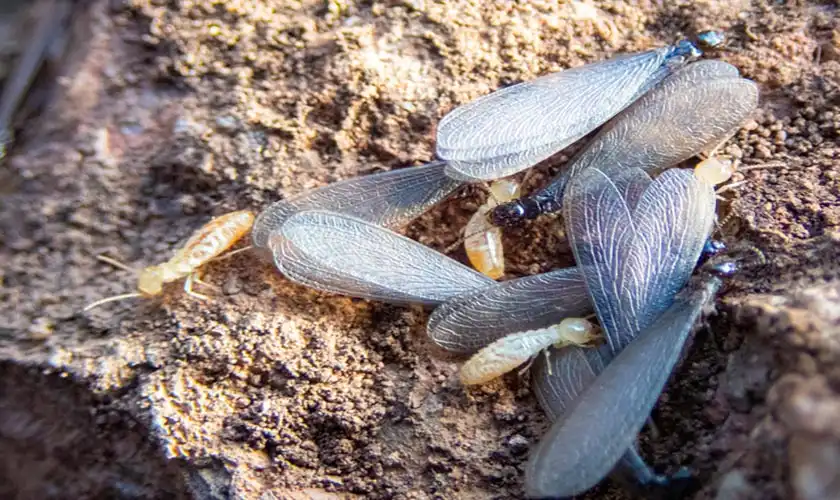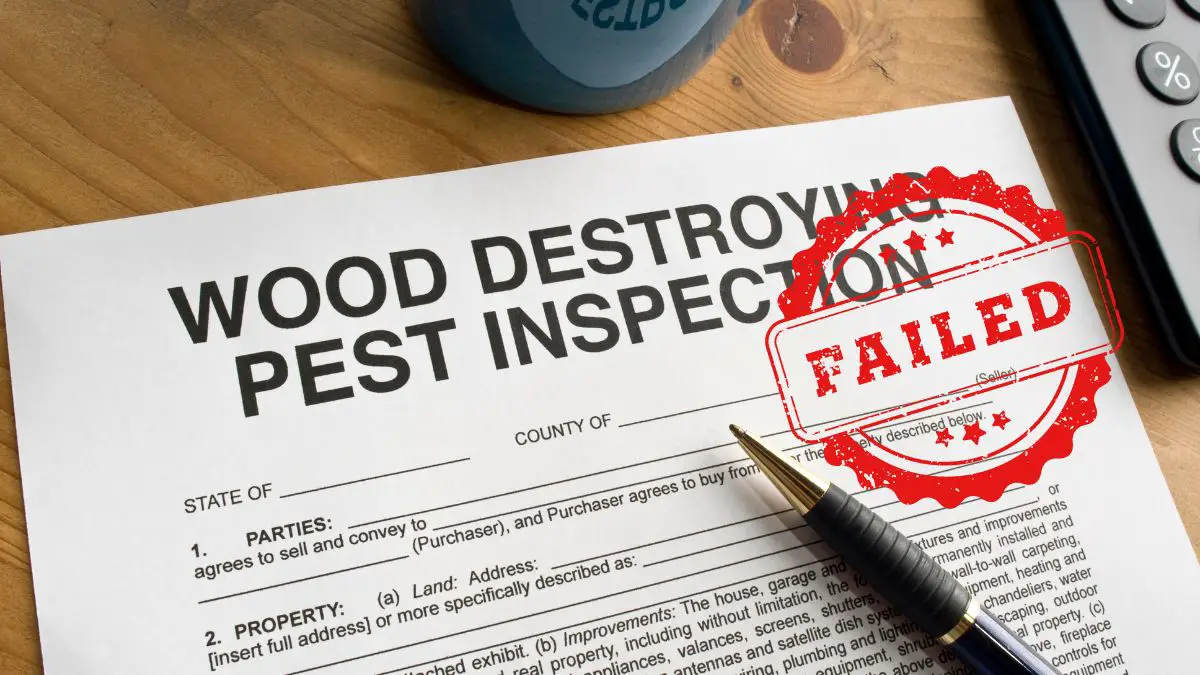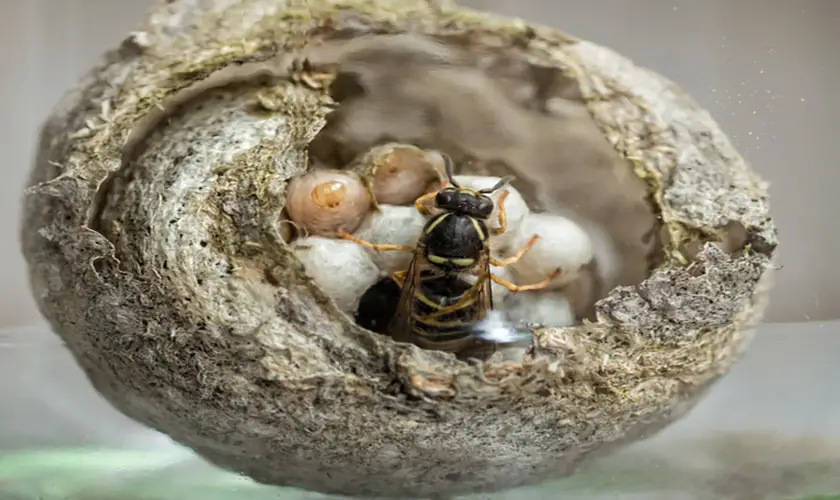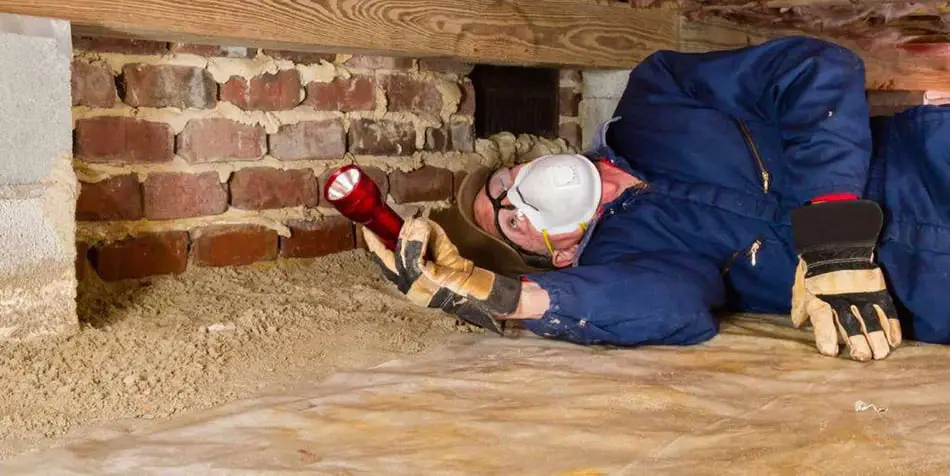
Termites are a homeowner’s worst nightmare and are sometimes only spotted after they have already done damage. If you live in an area where they occur, you should take preventative action. Although several termite poisons (termiticides) are available, they are highly toxic, so you may want to avoid them.
There are many natural treatments for wood infested with termites. Neem oil, nematodes, diatomaceous earth, boric acid, vinegar, cayenne pepper, or salt can help eliminate them. You can also use bio-insecticides that contain an entomopathogenic fungus to kill them or simple cardboard traps.
The treatment you use will be determined by the termites’ location, the kind of termite, and how quickly you need to get rid of them. Termite infestations are commonly treated using soil-applied barrier methods containing various termiticides. If misused, they can contaminate the home, local wells, and boreholes and may not be successful.
Get FREE quotes from licensed pest control technicians in your area today. Whether you need a termite inspection or a full treatment, We Can Help! All technicians are screened, licensed, and insured.
Killing Termites The Natural Way
Chemical pesticides may be effective, but the side effects of these control methods and the harm they pose to the environment and ourselves make exploring some more natural alternatives worthwhile.
| Termiticide | Effect | Type of Termite |
| Boric acid – Borax, boron salts | Contact killer – won’t eradicate a colony. | Subterranean termites, dry wood termites, damp wood termites |
| Diatomaceous earth | Contact killer – more useful as a preventative barrier, won’t eradicate a colony. | Subterranean termite, dry wood termite, damp wood termite |
| Orange oil | Contact killer – only kills 77% of the termites, useful as a spot treatment. | Dry wood termite |
| Nematodes | It kills all infected termites – can eliminate a colony, but nematodes must be alive, and application can be tricky. | Subterranean termite, damp wood termite |
| Neem oil | Contact killer – spot treatment only; won’t eradicate a colony | Dry wood termite |
| Entomopathogenic fungi | Parasitizes the termites and consumes them. Can eradicate a colony | Subterranean termite |
| Sunlight | Kills termites – won’t eradicate a colony. Only practical for small items of wood. | Dry wood termite |
| Heat | Kills termites in buildings Can only be done by a professional pest company. | Dry wood termite |
Understanding The Kind of Termite You Need To Treat
Control techniques differ for dry wood, damp wood, and subterranean termites. It would help if you tried to identify and understand your type because it will help you deal with them effectively. A single termite species usually has three different forms (castes) apart from the queen.
- The flying ants, or the swarming caste, play a reproductive role by creating new colonies. They are not visible all year round but fly in swarms after the rain. Mating flyers who have dumped their wings can be seen running around with their backsides joined.
- The worker caste maintains the colony and takes care of the queen, who lays all the eggs. They are unable to reproduce sexually and are smaller than soldiers and flyers. They are highly mobile and the ones you are most likely to encounter when stumbling across a nest.
- The soldier caste is usually bigger than workers and flying ants, and their larger heads and pincers distinguish them. Their role is to protect the colony from invaders who are infertile.
- The termite queen is fat, immobile, and usually never seen. Her sole job is to lay eggs to populate the colony. She resides in the depths of the nest, where she is best protected from outside threats. Some species, such as subterranean termites, may have many queens.
There are also much smaller fertile males called kings that surround the queen. They are fed and groomed by the workers who remove the eggs to incubation chambers. A subterranean termite queen can live between 25 and 50 years.
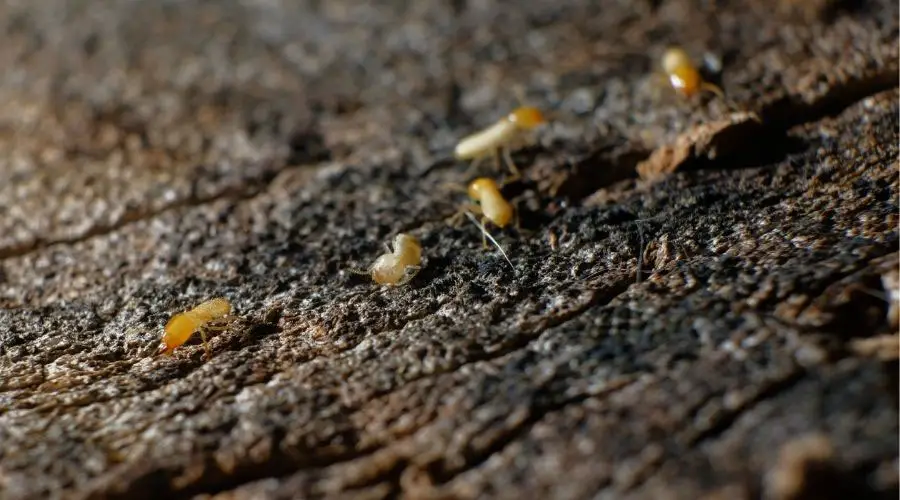
Dry Wood Termites
Dry wood termites are usually creamy white to light brown but can vary between dark brown and yellowish tan. A colony may consist of thousands of individuals. They eat the cellulose in wood and other plants. The winged form (an alate) has clear or smokey gray wings.
The soldier caste has large mouthparts with teeth, and soldiers and workers are bigger than those of subterranean termites.
They do not need high moisture levels to survive because they derive all their water from air humidity and the wood they eat. Thus, they are most commonly found in dry wood above the ground, like rafters, fence posts, wooden walls, and decking. They will also eat books, dried plants, and furniture.
Dry wood termites chew tunnels within wooden beams and flooring and can cause extensive damage to the structure of the home. They produce distinctly hexagonal fecal pellets that they kick out of their tunnels. These pellets are called frass, and their mounds can alert you to the presence of dry wood termites.
The flying termite sheds its wings very rapidly after swarming, so even if you find dead ones, they will usually be without their wings. This is a useful way to distinguish them from dead subterranean flyers, some of whom still have their wings attached.
Dry wood termites can cause the paint to bubble or peel and hollow out walls. These may be the first you know about an infestation. They can be widely dispersed throughout the home as they don’t need soil. Frass may first come to your attention as little piles on windowsills.
One way of avoiding an infestation of dry wood termites is by storing all scrap wood and firewood more than twenty feet away from the building. It would be best if you also sealed all cracks and crevices around the house’s foundations. Remove all timber and paper stored in the home, basement, or crawlspace.
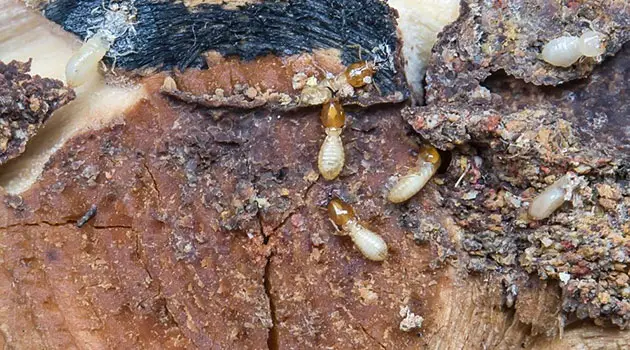
Damp Wood Termites
Damp wood termites are the largest of all the termites in North America but have the smallest colonies. They are usually brown but can range in color from light to dark and may have a reddish tinge near their abdomens. These termites live within the wood they eat, plugging openings with their feces, and don’t build mounds.
They mostly inhabit damp or decaying timber and need moisture to survive. Damp wood termites infest wood structures near leaking plumbing, poor drainage, or where ventilation is low. You can get rid of them by removing their water source and replacing damp wood.
If removing the wood is not an option, you can treat it with boric acid as long as the treated area is not accessible to children and pets. Damp wood termites attract logs, wood stumps, and lumber, so moving these away from your house will reduce the likelihood of an infestation.
A colony of damp wood termites consists of soldiers, immature termites doing all the work, and winged termites swarm at certain times of the year. They have large heads with pincers at the front. It is sometimes difficult to detect these termites because they are secretive and silent.
In the case of damp wood termites, reduce moisture near the foundations of buildings and divert rainwater away from the house by clearing blocked gutters and drainpipes. Repair all leaking pipes, faucets, and air conditioners and keep crawl spaces dry and well ventilated.
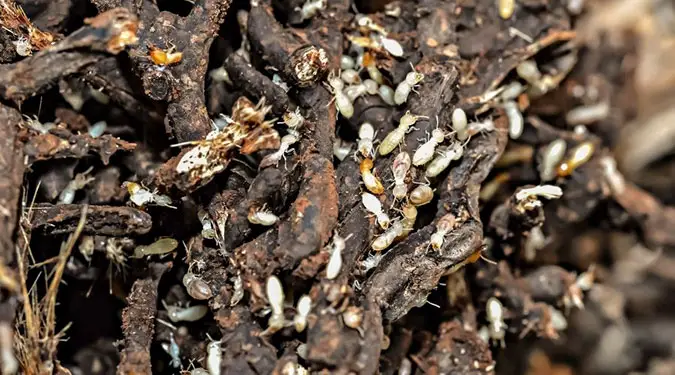
Subterranean Termites
One colony of subterranean termites may consist of between one hundred thousand and one million individuals. The eastern subterranean termite occurs throughout the eastern and mid-western United States. Other species are found in western North America.
Subterranean termites are more prevalent in the southern United States than in northern states because they cannot tolerate low temperatures. The first and most significant infestation hazard is beneath buildings without basements erected on a concrete slab or built over a poorly drained and ventilated crawl space. Other places are wooden substructures close to the ground or above an earth-fill, such as a wooden porch or deck.
Subterranean termite colonies maintain their headquarters below ground. They build tunnels through the earth to reach the wood. They also need a constant moisture source, whether from the wood they eat or the soil in which they nest. The worker caste destroys the wood.
Unlike dry wood termites, subterranean termites do not usually enter dwellings by being carried in within furniture, picture frames, or other lumber. They commonly gain access from nests below ground after building construction.
The Formosan termite, a subterranean species, frequently occurs in aboveground infestations in structures where the wood is wet for prolonged periods due to leaking pipes. Earthen tubes or travel tunnels running over foundations and other exterior surfaces are a telltale sign of subterranean termites.
Another sign of an infestation is the swarming of winged adults early in the spring or fall. The termites make hollow galleries in the wood that follow the grain, leaving just a shell where their activities are concealed. Suspect wood should be probed with a sharp object like a knife or screwdriver to see if it is stable or collapses easily.
Formosan termites are often called “super termites” because they are the most aggressive and voracious termite species.
Formosans gain access to the home through wooden structures in contact with the soil or unsealed cracks and joints. They love wet soil and moist wood and reproduce faster than other termites. They are yellowish-brown and are most often found in warm climates.
Although they live underground, they also build mud nests inside the walls of buildings. A colony of Formosan termites can be spread over an acre of ground.
To prevent an infestation of subterranean termites, eliminate places of contact between wooden components and the ground. Remove all wood debris from the property, direct irrigation sprinklers away from walls, and avoid placing rain barrels and other containers holding moisture within two feet of the foundations.
Using Boric Acid To Treat Termites
Boric acid contains boron, a mineral that occurs naturally in the environment and in certain foods like nuts. However, exposure to large amounts of boron in a short period can be toxic to humans. It affects the stomach, intestines, liver, kidney, and brain and can eventually lead to death.
Borax is a form of naturally occurring boron that is taken straight from the earth. It is used in hand soap, laundry detergent, and fertilizers. Chemical compounds containing boron are called borates, and boric acid is one such borate. It can kill insects if they eat it. Boric acid disrupts their stomach and affects their metabolism and nervous system. It is more effective at killing termites than borax.
It can also excoriate and damage the exoskeletons of insects. Boric acid can be sprayed as a powder or a liquid when diluted with water. It comes in many product forms – liquids, pellets, tablets, granules, wettable powders, rods, or baits.
When using boric acid to treat wood, you should always follow the instructions on the label because it is toxic to humans. Boric acid does not emit fumes and is non-toxic to birds, frogs, toads, and aquatic organisms. It also does not significantly affect bees.
Boric acid should be used in conjunction with other remedies because it cannot kill the entire colony on its own.
Here is a video on how to make a solution for treating termites. The solution in itself is made at around 4:50 minutes.
Using Diatomaceous Earth To Kill Termites
Diatomaceous earth (DE) consists of tiny fossilized aquatic organisms that look like broken glass under a microscope. It kills by excoriating an insect’s outer layer as it crawls over the fine powder. Therefore it is only useful if the insect makes physical contact with it.
DE does not contain toxins and is more of a barrier tool to prevent termite infestations. When dusted on exposed wood, DE creates a barrier against termites entering the home. The number of insects it kills is limited and will certainly not eradicate an entire colony.
One research study concluded that while it contributed significantly to termites’ mortality rate above ground, it is not that effective for subterranean ones. It can safely be applied in and around the home in cellars, basements, attics, doors, and windowsills.
Using DE in conjunction with other termite prevention and treatment methods is best.
Can Orange Oil Kill Termites?
Orange oil is extracted from orange rinds. The active ingredient, called D-limonene, kills termites on contact by breaking down their exoskeletons and destroying their eggs.
It is not effective against subterranean termites and must be used cautiously because it is combustible in wood. Orange oil is a contact killer, so if the termites don’t directly contact it, they won’t die.
Orange oil is only recommended for treating dry wood termites, so applying it to furniture and other wooden objects infested by them is useful. Using it effectively entails drilling holes into the wood and injecting the oil. It spreads along the wood by capillary action killing termites and their eggs on contact.
You should not use orange oil in isolation because it is only useful as a spot treatment. A study from the University of California showed that orange oil killed only 77% of the termites under ideal laboratory conditions. This is insufficient to eliminate a colony, so you should use it with other methods.
Using Beneficial Nematodes To Kill Termites
Nematodes are naturally occurring, microscopic parasitic roundworms that prey on termites and other pests. They are so effective because they contain a gut bacterium that kills termites. Once the nematode enters the termite through the mouth, anus, or body wall, it releases the bacterium that lives inside its gut.
The nematode’s gut bacterium poisons the termite’s blood and kills it.
Once the nematode has consumed the termite, it moves on to the next. Nematodes breed and multiply in the termite colony and will keep killing the insects for weeks. A nematode can kill a termite in twenty-four hours. Beneficial nematodes are one of the most effective natural methods of termite control.
The easiest application method is to mix them in a bucket of water and then apply them with a spray bottle. Spray the areas where you see signs of termite infestation evenly and liberally. You usually have to use the nematodes within a month of buying them. Most can be stored in a refrigerator, not a freezer, spray bottle, or bucket.
Not all nematodes kill termites, so you must ensure you buy the correct type. It is best to order the nematodes to be delivered to your house because there is no guarantee that store-bought nematodes are alive. Getting a batch of nematodes to take in the environment where you spray them can be challenging.
They are absorbed into the environment when they die and are not toxic to other life forms.
A small batch of nematodes can remain useful for a long time, provided there are termites to consume. They don’t negatively affect pets, plants, or humans.

Can Neem Oil Kill Termites?
Neem oil comes from the Neem tree. The limonoid compounds in neem have adverse effects on many insects. Several reviews suggest that neem is safe for humans, warm-blooded animals, birds, and beneficial insects like bees.
Neem oil interrupts the reproductive cycle of insects. When a termite eats the oil, it changes its hormonal system. This causes termites to forget to eat and ultimately prevents egg-laying, which stops them from spreading. It also gives off a scent that termites dislike, protecting areas treated with it.
Like orange oil, neem oil only kills termites on contact. This method is challenging, if not impossible, to reach subterranean termites. It may be more effective on dry and damp wood termites, but several neem oil applications will be necessary. Also, neem oil is not sufficient to kill off the entire colony.
Neem oil has been widely studied and used as an insect repellent, feeding inhibitor, growth retardant, and sterilizer. However, it should be used in conjunction with other methods to eradicate a termite infestation.
Using Entomopathogenic Fungi To Eliminate Termites
An entomopathogenic fungus can parasitize insects and kill or seriously disable them. Since they are natural and environmentally safe, there is worldwide interest in using entomopathogenic fungi for the biological control of insects.
The fungus operates by attaching itself to the external surface of the insect’s body in the form of microscopic spores. Under the right conditions, the spores germinate, colonize the insect’s body cavity and consume it from the inside out.
Laboratory studies have shown that termites are susceptible to entomopathogenic fungi such as Metarhizium anisopliae and Beauveria bassiana. These fungi are highly virulent to many termite species.
Direct application of the fungus to termite nests results in the death of the entire colony. However, applying the fungus directly to the nest is not necessary. If the workers carry the spores into the nest from outside, they will fatally infect it.
The fungus Metarhizium anisopliae has been known for more than a century and can be found in most people’s backyards. Scientists have known for years that it is a natural predator of termites. Research indicates that it controls many species of subterranean termites, damp wood termites, and dry wood termites.
The fungus can safely be used in homes, apartments, offices, warehouses, greenhouses, and schools. It has only recently been formulated as a commercial termiticide. The manufacturers claim that one hundred percent mortality for Formosan and eastern subterranean termites occurs in around two weeks.
You can eradicate colonies of other termites in four to six days by spraying only 10% of the insects. The speed with which the termites are eliminated depends on the colony’s size, the type of termite, and environmental conditions.
The problem with these fungi is that termites are sensitive to their spores, and the soldiers will prevent spore-contaminated workers from entering the nest. Getting the termites to carry the fungal spores into the colony is difficult.
Renowned mycologist Paul Stamets created a strain of the Metarhizium fungus, whose mycelium is an attractive food for many insects, including Formosan termites and eastern subterranean termites. In this strain, the fungal spores are produced after the mycelium is carried into the colony in the termite’s stomach. The insects cannot avoid the spores germinating and killing them.
The dead insects left in a colony decimated by the fungus ward off subsequent insect invasions because the carcasses remain moldy with the repellent spores. The fungus is non-toxic to fish, birds, bees, mice, rats, and rabbits.
It cannot grow in temperatures higher than 95o F and does not infect humans or other mammals. It is applied in a liquid slurry to mud tubes and active galleries, and it may be necessary to drill holes in wood where the termites are active to ensure that they make contact with it.
Spray nozzles of the correct size and length must be used to reach the infestation.
Why Would You Want To Treat Wood For Termites Naturally?
Termiticides kill not only termites but other insects that benefit the environment. They also poison birds, frogs, and other animals that eat insects as food. They end up in streams and waterways to kill the fish and invertebrates.
Chemical pesticides come in many brands and guises, but they all use certain active ingredients (poisons) to kill the termites. Commonly used active ingredients in termite poisons are listed in the table below, together with their modus operandi and disadvantages.
| Termiticide | Mode of Operation | Disadvantages |
|---|---|---|
| Acetamiprid | Disrupts vital functions in the termite nervous system when ingested or absorbed | Highly toxic to birds. Moderately toxic to aquatic animals. Can kill non-target insects |
| Fipronil | Disrupts the functioning of the termite’s central nervous system. Causes paralysis and death | Highly toxic to ocean fish, freshwater fish, and water-dwelling invertebrates, It kills non-target insects, too. It can kill pets and can cause illness and death in humans. |
| Bifenthrin Derived from naturally occurring chemicals in chrysanthemums | It prevents termites nerves from functioning | Highly toxic to aquatic life, bees, dogs, cats, and other pets |
| Imidacloprid | Mimics nicotine by blocking termites’ neuronal pathways | Highly toxic beneficial insects, including bees and upland game birds. It can leach into groundwater |
| Hexaflumuron | It inhibits the termites’ growth by preventing them from forming exoskeletons. Eventually kills the queen. | Highly toxic to aquatic animals |
Natural pest control is often cheaper than applying chemical pesticides because you can use many products and materials available in the home. Organic termite control methods preserve the environment and don’t harm beneficial insects and animals.
Conclusion
There are great benefits in using non-chemical, naturally occurring pesticides that are ecologically friendly and comparatively safe for humans and other animals. Some of the natural methods mentioned in this article are only partially effective but can be combined to create a complete solution for getting rid of termites. Many pest control companies prefer to use natural termiticides rather than harmful chemicals, so you can call them in to help with an infestation you can’t handle.
Get FREE quotes from licensed pest control technicians in your area today. Whether you need a termite inspection or a full treatment, We Can Help! All technicians are screened, licensed, and insured.


